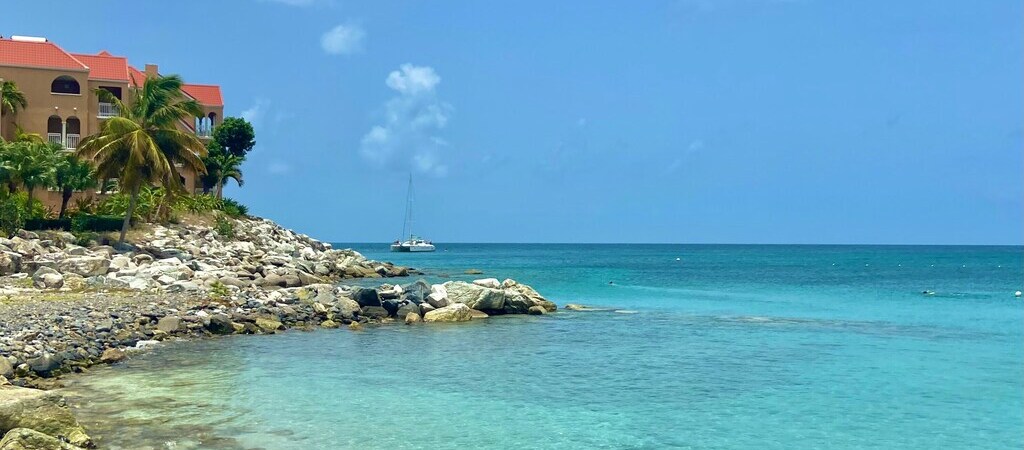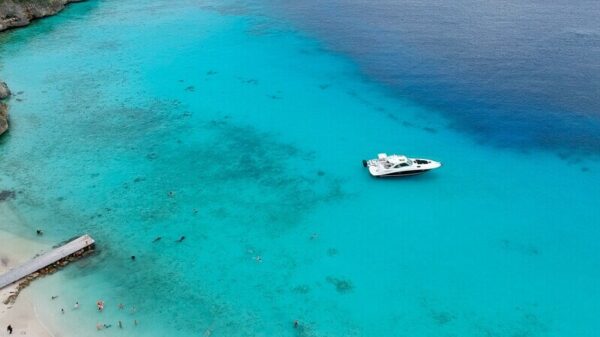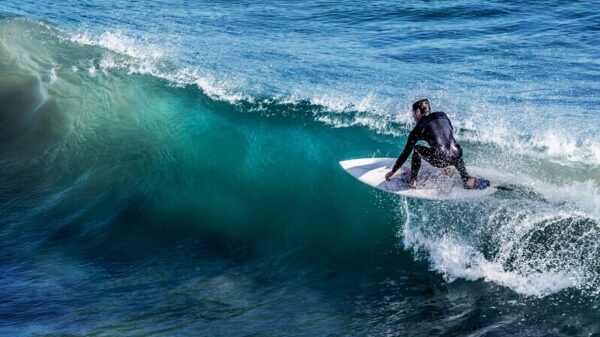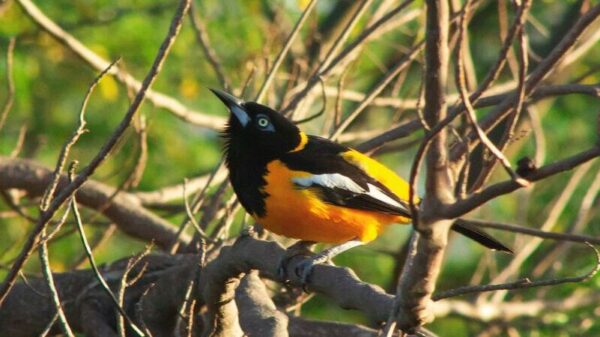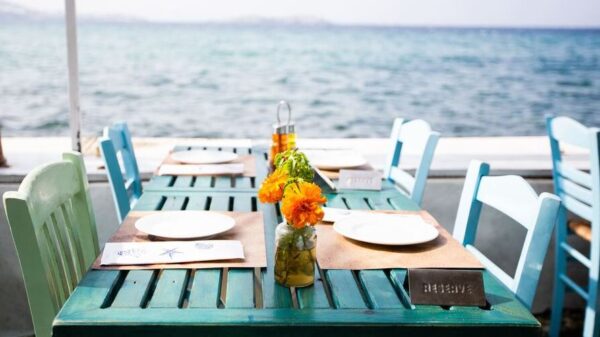The Dutch Caribbean Islands include Aruba, Bonaire, Curaçao, St. Maarten, St. Eustatius, and Saba. We provide you with an overview of the Dutch Caribbean Islands and highlight what makes these islands such unique destinations. Additionally, we offer valuable tips for excursion recommendations.
This page contains affiliate links marked with an asterisk (*). If you decide to make a purchase after clicking on a link, we may receive a commission at no extra cost to you.
The Dutch Caribbean Islands: An Overview
The Dutch Caribbean Islands Aruba, Curaçao, and St. Maarten are autonomous countries, yet affiliated with the Kingdom of the Netherlands. Conversely, the Dutch Caribbean Islands of Bonaire, St. Eustatius, and Saba, also known as the BES islands, are considered special municipalities. These three islands are also politically part of the Netherlands and have less autonomy.
These six islands are characterized by their shared colonial history that shaped their heritage. Despite the dark chapters of their past, the Dutch Caribbean Islands have evolved into popular holiday destinations in the Caribbean.
Their rich cultural diversity, fascinating landscapes, and welcoming atmosphere make them a sought-after destination for travelers from all over the world.
Dutch Caribbean Islands: From Then to Now
From the 17th century, the Netherlands began expanding their dominion in the Caribbean, initially occupying Aruba, Bonaire, and Curaçao in 1634. Over time, they extended their influence to other islands like St. Maarten, St. Eustatius, and Saba.
These colonies were controlled over time by France, Great Britain, and the Netherlands until they finally became permanently Dutch in 1816.
The Netherlands aimed to expand their trade routes just like other colonial powers, cultivating new resources such as cotton, sugar, or tobacco on plantations, which was well-suited to the climatic conditions on the Dutch Caribbean Islands.
To meet labor demands, the Netherlands brought slaves from various African countries to the Caribbean. It was not until July 1, 1863, that the Netherlands, as one of the last countries in Europe, officially abolished slavery.
Between 1948 and 1954, the colony “Netherlands Antilles” was an autonomous territory, which replaced the formerly larger Dutch colonial empire. In 1954, the colony gained the status of an internally autonomous country within the Kingdom.
Aruba separated from the Netherlands Antilles in 1985 and became its own country within the Kingdom of the Netherlands. Curaçao and St. Maarten followed in 2010 and also became autonomous countries. In contrast, Bonaire, St. Eustatius, and Saba remain Special Municipalities of the Netherlands to this day.
ABC Islands as Part of the Dutch Caribbean Islands
Aruba, Bonaire, and Curaçao, commonly known as the ABC Islands, are among the so-called “Leeward Islands”. They are located in the southern Caribbean and lie relatively close to the South American mainland, off the coast of Venezuela. Typically, the “Leeward Islands” are drier and characterized by an average annual temperature of about 84,2 °F.
Due to their geographical location, the region remains largely unaffected by trade winds, which means tropical storms and heavy rainfall are rare, and hurricanes are extremely unlikely.
Dutch Caribbean Island #1: Aruba
Aruba, the smallest of the three islands with an area of about 74,5 mi² (75 sq mi), is home to approximately 108,000 people, with about a quarter living in Oranjestad, the capital. Scattered across the island, you’ll find the distinctive colonial buildings with their colorful facades, especially plentiful in the capital.
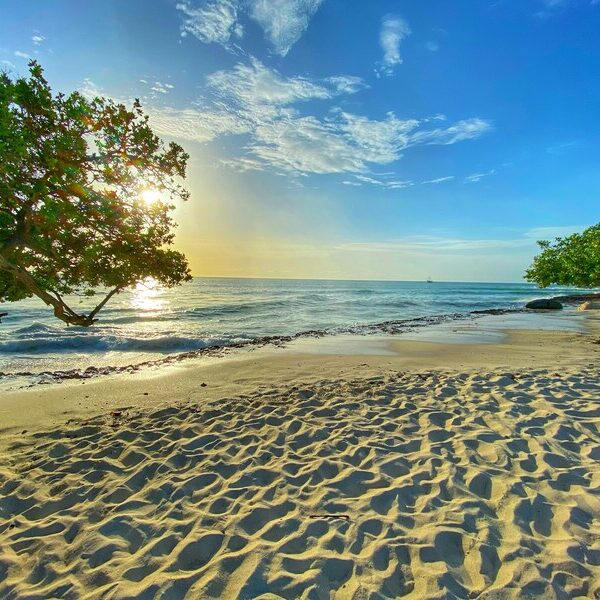
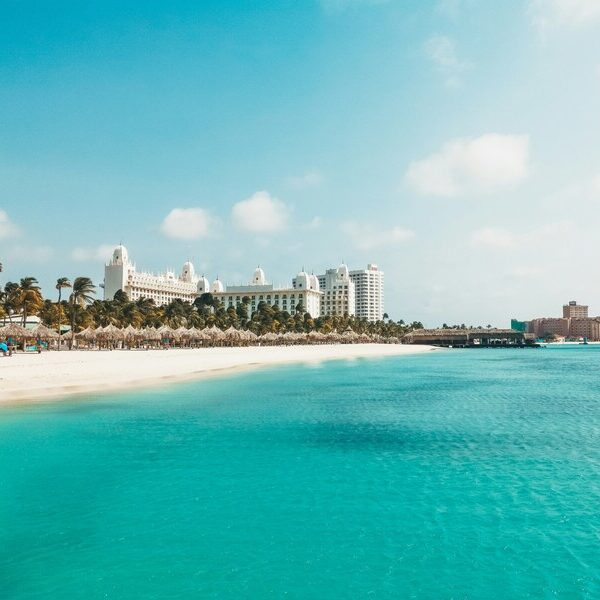
But the island has much more to offer. Its hallmark is the endless, white sandy beaches that surround Aruba, inviting those seeking relaxation to linger. For snorkeling enthusiasts, these beaches provide the perfect opportunity to explore the vibrant underwater life. In addition, Aruba offers a multitude of exciting destinations for nature lovers, such as Arikok National Park, the Guadirikiri Caves, and Mount Yamanota.
Dutch Caribbean Island #2: Bonaire
Although Bonaire, with an area of 111 mi², is the second largest of the three islands, it only has about 24,000 inhabitants. The island is extremely popular among divers of all experience levels — whether beginners, intermediates, or professionals. The abundance of coral reefs with their fascinating biodiversity explains this enthusiasm.
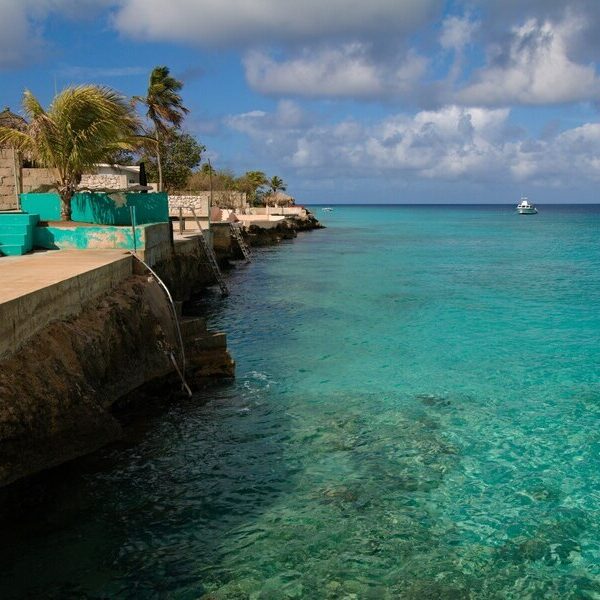
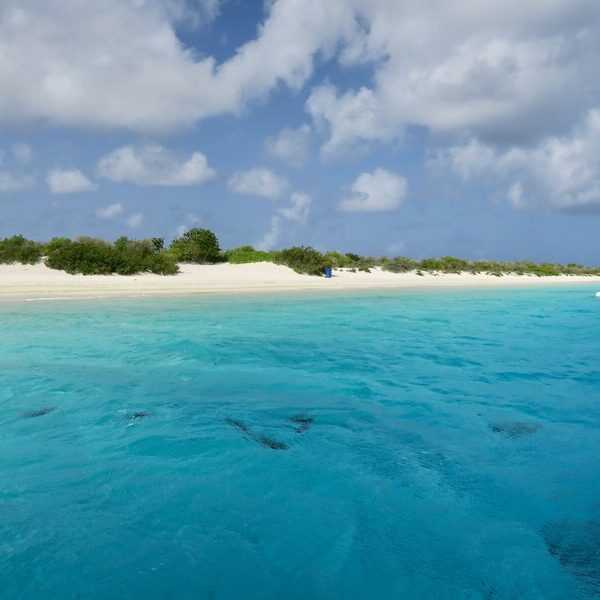
The Bonaire National Marine Park, which surrounds the island, plays a significant role in the conservation of this impressive underwater landscape. This nature reserve encompasses all waters, including coral reefs and seagrass beds, as well as some coastal areas with mangrove forests.
Dutch Caribbean Island #3: Curaçao
Curaçao, the largest of the three islands, is home to about 152,000 residents across an area of 171 mi². A trip to Willemstad, the capital of this Dutch Caribbean Island, is highly recommended. There, you will find not only numerous historic buildings, but also exciting museums, diverse restaurants, and other noteworthy attractions. Given the wealth of things to explore, we suggest walking through the narrow alleys. In Willemstad, you can also see the famous Handelskade, a row of pastel-colored colonial buildings, which, along with the harbor, was designated a UNESCO World Heritage Site in 1997.
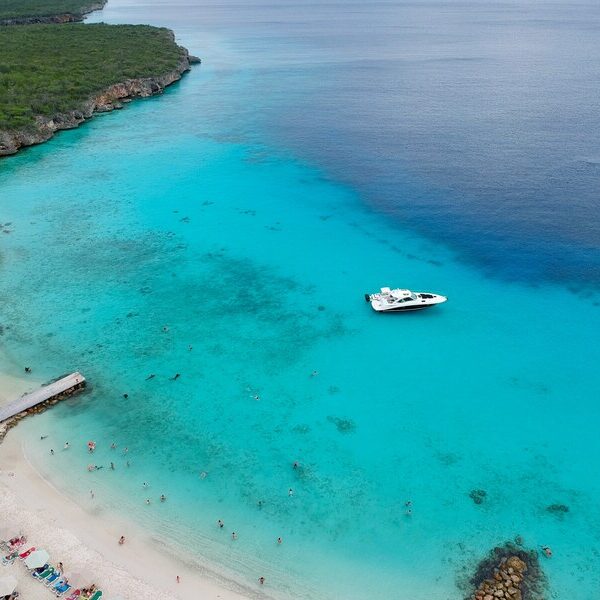
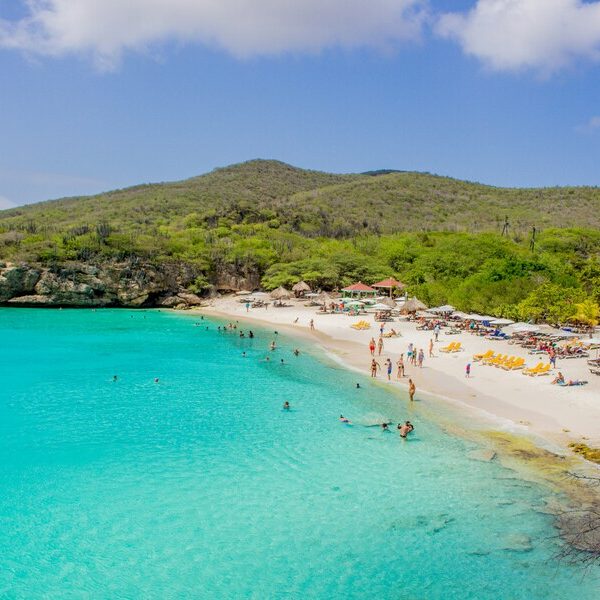
Away from the center, there is also much to explore. If you enjoy long hikes, a trip to Christoffel National Park or Shete Boka National Park might be just right for you. Additionally, Curaçao offers numerous beaches of various sizes and facilities to discover. The underwater world is particularly impressive, ideal for snorkeling and diving. Alongside shipwrecks and coral reefs, you can also observe cute turtles, seahorses, tang fish, and many other marine creatures in their natural habitat.
SSS Islands: Hidden Dream Destinations in the Caribbean
The so-called “Windward Islands” in the northeastern Caribbean consist of Sint Maarten, Sint Eustatius, and Saba, also known as the SSS Islands. Unlike the “Leeward Islands,” the climate on the SSS Islands varies between humid and dry, depending on the season. It’s also worth noting that the “Windward Islands” are influenced by the trade winds, which can lead to hurricanes, particularly between June and November.
Dutch Caribbean Island #4: Sint Maarten
The island of St. Martin is divided into two parts. The larger, northern part “Saint-Martin” belongs to France, while the smaller, southern part “Sint Maarten” is part of the Netherlands and thus also the Dutch Caribbean Islands. The approximately 40,000 residents of St. Maarten are spread over an area of 13 mi². Despite its small size, the island has a lot to offer.
A special attraction is Maho Beach, located right next to the island airport. From there, you can watch airplanes up close as they take off and land. However, it should be noted: Enter at your own risk!
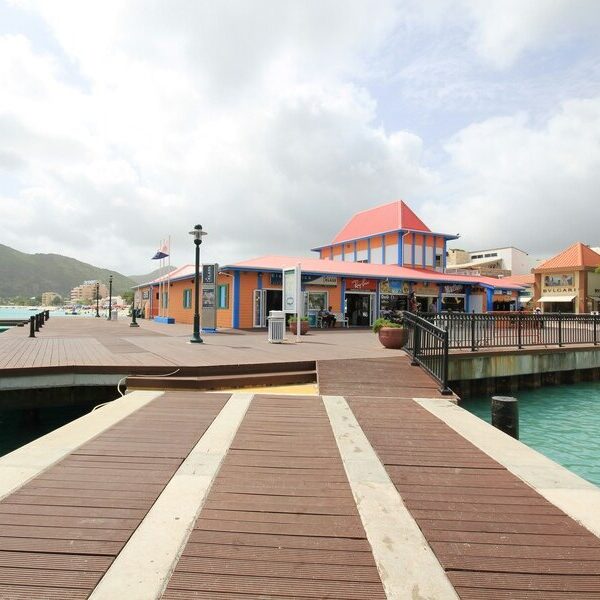
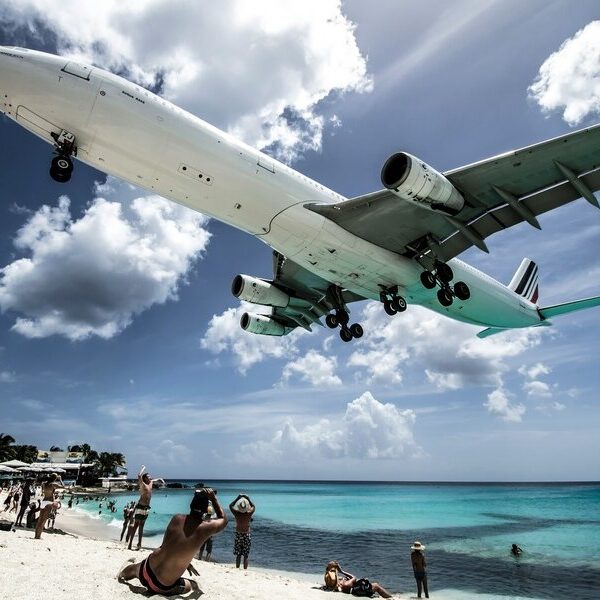
If you’re longing for a relaxing day at the beach, a visit to Great Beach is recommended, known for its crystal-clear water. A special highlight is the lively beach promenade, where you’ll find numerous shops, cafes, and bars. Great Beach is located right in Philipsburg, the impressive island capital.
Therefore, it makes sense to combine a beach day with a tour through the downtown area to explore the architecture and the exciting museums, such as the Sint Maarten Museum.
Dutch Caribbean Island #5: Sint Eustatius
The second largest of the SSS Islands is Sint Eustatius, covering an area of 8 mi², with a population of 2,900. The only town on the island is Oranjestad, which is also the capital.
The most famous landmark is Fort Oranje, located in the upper part of Oranjestad. From there, you have an excellent view of the sea. In the lower part of the capital, you will find some lovely beaches, the harbor, and several ruins from the colonial period.
An annual highlight is the Statia Carnival, held on the last weekend in July since 1964. Over a period of ten days, various parties, parades, and other events are joyously celebrated. If you have the chance to participate in this unique festival in a cheerful atmosphere, you should not miss it.
Dutch Caribbean Island #6: Saba
With a total area of just 5 mi², Saba is the smallest Dutch Caribbean Island. In addition to the capital “The Bottom,” Saba has three other settlements named “Windwardside,” “Zion’s Hill,” and “St. Johns,” where its roughly 1,900 residents live.
Despite its size, the island is particularly popular with tourists interested in the underwater world. In 1987, the Saba National Marine Park was established to counteract environmental destruction, providing excellent protection for marine life and coral reefs.
Nature lovers can discover even more highlights on the island. The Mount Scenery National Park, covering about 864 acres, spans areas in the west and north of Saba. The landscape within the national park is primarily characterized by dense forests. A unique feature is the hot springs also found in the region. Additionally, during a visit, you will encounter a variety of animal species, including various bats, charming birds, and iguanas.
Dutch Caribbean Islands: Your Flight Options
If you’re planning to visit the ABC Islands, you have the option to fly there.
➤ Direct flight to the ABC Islands: Numerous airports across the United States offer direct flights to Bonaire, Aruba, and Curaçao. The flight duration will depend on your departure airport and destination. Airlines that offer direct flights to one of these destinations include United Airlines, American Airlines, and JetBlue Airlines. Opting for a direct flight not only speeds up your travel but also minimizes the chances of your luggage getting lost or delayed. This can make your trip significantly less stressful.
➤ Traveling to the ABC Islands with a stopover: If you’re not close to an airport with direct flights, consider booking a flight that includes a stopover. This option can often be more cost-effective.
➤ Direct flight to St. Maarten + onward travel to St. Eustatius & Saba: Want to travel to St. Maarten? A convenient direct flight makes this possible. Many airports in the USA offer direct flights. However, there are no direct flights to St. Eustatius and Saba. Luckily, St. Maarten’s airport connects to these smaller islands. Thus, it’s a great idea to pair your visit to St. Eustatius or Saba with a stop in St. Maarten. This allows you to incorporate this beautiful island into your travel plans.
Caribbean Cruise: Top Route Recommendation
If you’re looking to visit multiple islands, a Caribbean cruise is a great option. Cruises are known for their comfort, allowing you to explore several destinations in a short amount of time. Plus, cruise ships offer a wide range of dining options and diverse recreational activities.
For example, AIDA offers cruises departing from Martinique, a small island in the Caribbean. From Martinique, the cruise takes you to Curaçao, Aruba, and La Romana, then on to Antigua. After that, the itinerary includes St. Kitts, St. Maarten, Road Town, and Samana. The journey ends in Montego Bay, Jamaica.
Depending on the destination, you’ll spend one to two days on each island, giving you ample time to visit the main attractions and get a good overview of several stunning Caribbean islands.
Discovering the Dutch Caribbean: A Final Take
The six Dutch Caribbean Islands — Aruba, Bonaire, Curaçao, Sint Maarten, Sint Eustatius, and Saba — offer a wide range of cultural and historical attractions. Each island has its own unique charm that captivates travelers from around the world.
From white sandy beaches and historic city centers to fascinating underwater worlds and pristine national parks, each island provides a distinct travel experience. Whether you’re looking for new adventures, pure relaxation, or cultural enrichment, the Dutch Caribbean Islands have something special for you.

